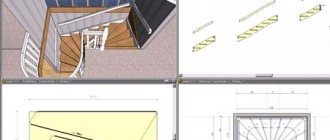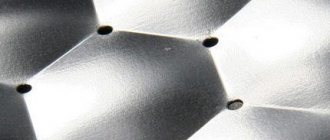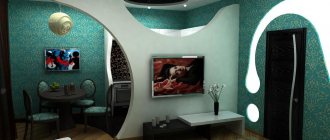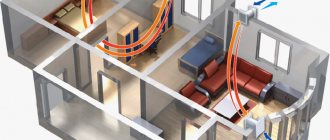Programs for electricians are computer-aided design systems in the field of electronics and electrical engineering, used by specialists to draw up electrical diagrams, perform calculations, as well as create detailed drawings of any complexity, saving data in package folders. Software facilitates work, speeds up, automates the technological process, and increases labor efficiency.
Programs for electricians increase work efficiency.
Features of using special programs in the work of electricians
In the course of their professional activities, electricians have to:
- calculate the wire cross-section, the amount of main or consumable material;
- determine the power of the electric drive, the rated current value and other parameters;
- design grounding, shield, wiring in a residential building, industrial premises;
- trace electronic boards.
Without special software, it is difficult to cope with the task.
Modern technologies allow you to complete the job quickly, but subject to prior familiarization with the program. Demo versions are provided for this purpose.
Testing is designed for a month of free use, helps with completing a one-time task or gaining skills in modeling electrical circuits.
Specialized software is provided for students of technical colleges, universities, beginners and professional electricians, electronic engineers who are constantly working on new projects.
Drawing up a block diagram
On the “View” ribbon tab, I select the “Two VE” viewport configuration and begin creating a block diagram. The “Isolate Objects” function comes to the rescue again.
The block diagram is made up of special blocks. Blocks for which data will be extracted into the specification of equipment, products and materials and which will act as parent objects for blocks on floor plans.
Let's look at the blocks for the block diagram using the example of a fire detector block
Attributes for extraction into the specification, except for “S.MARK”, have the “Hidden” parameter. The “S.MARK” attribute lies on the “Defpoints” layer, it is used to additionally check the correctness of the equipment selection. The same attributes have been added to all blocks for the block diagram.
Review of the most popular
The developers present paid and free versions of the programs. Free graphic editors are simplified and provide access only to basic functions. Therefore, applications are installed on a computer or mobile device for use for domestic purposes, for example, for designing electrical wiring in a private house or apartment.
Popular programs are “Electrician” for PC, “Mobile Electrician” for tablets and smartphones with an intuitive interface. Training does not take much time.
"Electrician" is the most popular program for PC.
Paid packages are commercial products with advanced capabilities, additional blocks, and tools. The editors are presented in full version and work without restrictions. When calculating, the error is minimal. Automated systems are designed for engineers as well as experienced electronics specialists.
The most popular are Splan, AutoCad, Micro-Cap. The programs have proven themselves well among users and contain useful options.
Creating an Extract
The blocks are arranged, the attributes are filled in, the intermediate fields are created. It's time to talk about what I've been preparing the file for for so long, about data extraction. As already mentioned, a stub for the specification has been created in the model space, and a table with the extraction will be inserted in its place.
On the ribbon, in the “Insert” tab, I call the “Extract data” command.
Create an extract file that AutoCAD will access in the future.
Filtering object types.
I select the required attributes.
I am setting up the columns to comply with Form 1 according to GOST 21.110-2013.
I paste the table into the file.
I choose the table style.
I'm finishing up the Data Extraction Wizard.
I insert the finished table into the model space on top of the stub table and delete the second one as unnecessary. After that, I add new lines and fill in the remaining positions.
Paid programs - assistants
Licensed software from domestic and foreign developers is provided on a paid basis.
Splan
Splan is a program for designing electrical circuits by a radio amateur or electrician. The official application is created in English. The user can easily understand the settings without downloading a Russified utility, although there are Russian versions with an updated database of radio elements.
Splan is needed for designing electrical circuits.
The package includes a graphic editor, a text module, and libraries with ready-made electrical components. The library block can be expanded - supplemented with your own templates.
In addition, the system has functions such as:
- automatic numbering;
- grouping elements;
- drawing components at an angle;
- rotation of the template;
- inserting a picture;
- export to jpg, bmp formats.
A distinctive advantage is the function of printing large formats on a simple printer with the entire drawing divided into A4 sheets.
AutoCad
The world leader in the development and supply of software for designing objects, manufacturing mechanical engineering, welding structures, and electrical equipment is the Autodesk company, founded in California, USA. Its main commercial product, known among engineers, is the AutoCad program. The automated system is capable of creating 2- and 3-dimensional drawings.
AutoCad is an automated system for creating drawings.
Based on it, the AutoCad Electrical add-on was released - an extended version for electrical engineers who are involved in electronic modeling of products. In addition to the main construction functions, the application contains tools for generating graphic images, designing 2D drawings of the layout of mounting panels, cabinets, and automatically generating reports.
The complex has programmable logic controllers (PLC), the functions of which greatly increase productivity and provide accurate images of electrical and other circuits. The PLC input/output library contains more than 3 thousand products from different manufacturers.
As of 2021, the software is no longer available as a separate product. The add-on is included in the complete AutoCad package.
NanoCad
CAD was developed on the basis of Russian standards and is intended for the design of power electrical equipment, external/internal electric lighting. The special Open Bim tool allows you to integrate the created electrical network into the model of the designed object on any Bim platform. The process is carried out thanks to export to IFC standard exchange files.
NanoCad is intended for the design of electrical equipment.
NanoCad "Electro" is capable of performing the following calculations:
- Lighting measurements (number of lamps in the room) using 2 methods:
- point;
- using the utilization rate.
- Electrical parameters:
- electrical loads;
- 1-, 2-, 3-phase short circuit currents;
- leakage currents through insulating material;
- wires for non-ignition;
- voltage drop.
The program contains a free, ready-made database of electrical equipment from different manufacturers that collaborate with intellectual product developers as part of partnerships.
Eagle
A paid package has been released in English to help electricians. There are localizers on the Internet, but they do not guarantee high-quality translation or correct operation of the application.
Eagle allows you to create electrical diagrams.
Using the software, you can draw up electrical diagrams and trace the board.
Main parts of the program:
- Schematic Module – graphic module. Allows you to create images of electrical circuits using standard components.
- Layout Editor – layout editor. Helps the user to make manual PCB drawings.
- Autorouter – automatic router. Defines the location of conductors on a printed circuit board.
Beginners can install a free version of the program with minor restrictions.
"Elf"
The software has a rather difficult to understand interface.
Thanks to the distribution, users can:
- design interior lighting down to the smallest detail;
- draw up specifications for wiring, electrical installations, objects;
- create documents;
- calculate loads on buildings;
- perform analytical and geometric calculations;
- select switches, lamps, cables, wires according to parameters;
- make drawings when planning electrical circuits.
The Elf program has a complex interface.
The software was created by IT for Windows OS and is presented in Russian.
Microsoft Visio
The resource developer is Microsoft. The application for electricians is included in the basic office software package. The system's tools are capable of producing simple radio circuits. In the menu, the user can find a library of templates and use ready-made sketches of elements and nodes. You can upload your own structural drawings from a computer or electrical components from additional databases downloaded from the Internet.
The add-on for electricians is compatible with Word, which allows you to draw pictures and sign them.
Dip Trace
Commercial product – high-quality service for the development of complex multi-level electronic boards and electrical circuits from the Ukrainian company. The program has an intuitive interface, works without errors, contains a database of 140 thousand components, 15.2 thousand 3D models of housings, and finished structures.
Using the graphical tools "Package Editor", "Component Editor" and "Spatial Modeling", the user can easily create his own board layout.
Dip Trace is an electronic board development service.
The developer offers beginners a free trial or 30-day demo version of the program for Win32, Win64, MacOS.
Eplan Electric
Eplan Electric P8 is an updated specialized system for engineering. CAD is an additional modular complex of electrical engineering design, automatic creation of connection diagrams, working and design documentation. The founder of the program is the leading supplier of IT products Eplan Software & Service GmbH & Co. KG (Germany).
Software features:
- Calculation of electrical parameters.
- Formation of an electrical circuit and wiring.
- Saving up to 26 scheme options for each presentation.
- Macro project management.
- Moving components using drag-and-drop technology.
- Formation of specifications for terminal blocks, cables, consumables.
- Data analysis.
- Generating breakpoint cross-references.
- Printout of the drawing.
Eplan Electric is a complex of electrical engineering design.
The company provides a chance for everyone to sign up for a practical seminar, take a course or train online.
Target 3001
Thanks to the application, an electrician can draw an electrical circuit, create a printed circuit board model, and design the front panels of front devices.
The software interface is clear and the settings are easy to understand. The basic operations are similar to the functions of the Splan program.
Main distinctive features:
- Asic Designer is a block that allows you to create the design of integrated circuits.
- Simulation of electrical circuits using direct and alternating current using the PSPice simulator.
- Auto positioning.
- Built-in autorouters.
- Vector graphics.
- Reading raster files.
- Packaging BGAs, COB.
Target 3001 allows you to draw an electrical circuit.
To get acquainted with the application, you can install a free limited demo version of 250 pins, 2 layers, 30 signals.
Micro-Cap
CAD was developed by Spectrum Software (USA), which ceased to exist in 2021. Therefore, the program created for analog/digital modeling of electrical circuits with a visual editor is now freely available in English. It can be downloaded for free.
The program has a wide range of capabilities:
- Drawing up circuit equations.
- Calculation of indicators.
- Designing an electrical circuit in a graphic editor.
- Library of electronic components.
- Replenishing the database with elements using the Shape Editor module.
- Analysis of transfer parameters, DC sensitivity, transient processes.
Micro-Cap is a program with a visual editor.
Micro-Cap is a popular application among radio amateurs, novice DIYers, professional electricians, students, and microelectronics university teachers.
TurboCad
A set of special tools is capable of solving an engineering or electrical task. The program is similar to construction AutoCad, but there are differences in its favor:
- High-quality visualization of a 3-dimensional model.
- Large selection of architectural and mechanical tools.
- Precise design of objects.
- Customizing the interface for the user.
Due to the expanded functionality of CAD software for drawing, it is suitable for builders, mechanics, and designers.
Designer Schematic
An intellectual resource for electricians – a joint development of American companies Digi-Key Corporation and Mentor Graphics Corporation. The software is at the testing stage. Therefore, users are offered to download the beta version in English.
Designer Schematic is a resource for electricians.
The application allows you to work with diagrams of different sizes and any level of complexity. A detailed description of the options is displayed in pop-up tabs - tooltips. The graphic editor has functions approaching those of mechanical CAD systems. The library was created on the basis of the world's largest supplier of electronic products, Digi-Key.
Completion of the specification
Having filled in the cells with the names of cable products, using a well-known method, I create a formula that sums up the values of the corresponding auxiliary fields and introduces a safety factor. You must configure the cell data format so that the value is an integer.
Free programs for electricians
On the Internet you can find many interesting applications for electricians for free.
Electrician program
An intelligent system is an assistant in solving simple and complex problems in the field of electronics.
It allows you to determine:
- power of the electrical appliance;
- consumed, rated current;
- short circuit current;
- voltage loss in the electrical network;
- cable section;
- number of conductors.
“Electrician” is an assistant for solving complex problems.
The program is in demand among electricians, electricians, and electronics engineers.
"1-2-3 scheme"
A convenient application for working with electricity at home. Using a specialized tool you can perform the following tasks:
- select the electrical panel housing according to the series, standard size, and material;
- equip it with switching and protective modular devices;
- set the hierarchy for connecting devices;
- automatically create a 1-line diagram.
Provided free of charge.
KiCad
The resource was created in C++. The package includes basic and additional utilities:
- a project block that configures the parameters of new tasks;
- eeschema – editor of electrical circuits and symbols;
- pcbnew – printed circuit board editor;
- gerbview – views files in Gerber format;
- cvpcb – defines footprints;
- wyoeditor - Views reports.
KiCad includes a schematic and symbol editor.
The library consists of a large number of electrical components, ready-made 3D models made in the Wings 3D program.
XCircuit
Main features of the software:
- creating a schematic representation of each element separately;
- modeling a circuit from templates or using input parameters;
- interaction with external simulator ngspice;
- support for multi-window mode, placement of marks for boards.
The software is more of an artistic resource for drawing than a specialized program for electricians, and to work with the product, the user will need time to master the application and gain practical skills.
Diagram Editor
The service is designed for drawing simple diagrams, sketches, generating block diagrams, and images of radio-electronic elements. Data can be exported to Postscript, downloaded, saved in XML format.
The Dia Diagram Editor program is designed for drawing diagrams.
TinyCad
The program is positioned as software for drawing and editing 2-dimensional electrical circuits of various levels of complexity. The application allows you to draw any geometric figure and add a text description to it. The editor contains more than 40 template databases, including parts, controllers, semiconductors, and diodes. There is a reference book.
English-language resource
Fritzing
Open source software was created specifically for circuit modeling and equipment mock-up production.
The program is configured for 3 modes:
- Bread board.
- Electrical diagram.
- Printed circuit board.
Fritzing is a circuit simulation program.
The library contains a large number of elements for various shields, modules, and sensors. You are allowed to upload your own components or modify existing ones.
QElectroTech
A simple program for drawing up radio-electronic, pneumatic, hydraulic circuits on a computer. It helps specialists and beginners alike create drawings, design new representations based on templates, and apply ready-made or custom stamps. The drawn drawings are printed on a printer.
Cadstar Express
The software developer is a large Japanese company Zuken. The software product is CAD with all the capabilities necessary for the user.
On the free resource you can:
- simulate printed circuit boards, electrical circuits, electrical installations, devices;
- using a conditional graphic editor, adjust symbols;
- draw up a specification;
- make changes to documents;
- trace boards in manual, semi-automatic/automatic mode;
- present results as files in standard ODB++, DXF, GenCAD and CADI formats.
Cadstar Express allows you to simulate boards and electrical circuits.
The database is represented by more than 20 thousand elements, 400 characters.
Preparation and collection of information
You can often hear the opinion that the work begins with creating a file from your template. In my opinion, the work begins with collecting information, obtaining floor plans, explication of premises and pre-design surveys.
My approach to design begins at the pre-design stage. The main thing at this stage is the idea of the mutual dependence of various engineering systems and architectural solutions of the facility: engineering systems are not located in an isolated space, we will not be able to continue the cables behind the air duct, even if they physically fit there. Therefore, when inspecting a property, I pay attention to the placement of fixtures, pipelines, air ducts, cable lines and ventilation outlets. Unfortunately, there is not enough time to measure all these elements and I have to mark some objects on the plans in relation to surrounding elements, for example, in relation to windows and doors. After completing the survey, you can begin selecting a template.
The sequence of installation of hidden electrical wiring
Hidden electrical wiring is installed in the same sequence as open wiring, only it is installed inside the walls or in the floor. First you need to install a distribution box for wire lines, connect the main power wire to it.
Then the switches are installed in the distribution box and the wires that will be located indoors are connected to them. It is necessary to measure the supply of wire, lay an internal channel and install the first junction box in this place at a distance of one and a half meters.
In it you need to select the main wires by cross-section depending on where the wire will go, select the thickness of the wire cross-section. Wires with a thicker cross-section of 2.5 mm are installed in the kitchen and laundry room. Wires of a thinner section from 1.5 mm are carried into the living room and bedroom.
Internal channels must be laid in insulating pipes, moving from room to room, do not forget to install a distribution box and be sure to leave a supply of wire in it. Wire connections must be easily accessible and firmly insulated. Sockets must have additional protection from children and from moisture.
Do not forget that the wires must be mounted in special cable channels to make them easy to dismantle. It is always worth remembering where the cable was laid, since during subsequent repairs nails and screws may be driven into this wall. And this can lead to damage to the electrical wire, which will lead to a short circuit in the electrical network.
Calculation of wire cross-section
Designing wiring in any apartment is impossible without calculating the wire cross-section. The stable operation of all circuit elements depends on it. The cross-section of the wire is determined taking into account the load on the electrical wiring that will be exerted by the electrical appliances in the house.
| Copper conductors of wires and cables | ||||
| Cross-section of current-carrying conductor, mm. | Voltage, 220 V | Voltage, 380 V | ||
| current, A | power, kWt | current, A | power, kWt | |
| 1,5 | 19 | 4,1 | 16 | 10,5 |
| 2,5 | 27 | 5,9 | 25 | 16,5 |
| 4 | 38 | 8,3 | 30 | 19,8 |
| 6 | 46 | 10,1 | 40 | 26,4 |
| 10 | 70 | 15,4 | 50 | 33,0 |
| 16 | 85 | 18,7 | 75 | 49,5 |
| 25 | 115 | 25,3 | 90 | 59,4 |
| 35 | 135 | 29,7 | 115 | 75,9 |
| 50 | 175 | 38,5 | 145 | 95,7 |
| 70 | 215 | 47,3 | 180 | 118,8 |
| 95 | 260 | 57,2 | 220 | 145,2 |
| 120 | 300 | 66,0 | 260 | 171,6 |
| Aluminum conductors of wires and cables | ||||
| Cross-section of current-carrying conductor, mm. | Voltage, 220 V | Voltage, 380 V | ||
| current, A | power, kWt | current, A | power, kWt | |
| 2,5 | 20 | 4,4 | 19 | 12,5 |
| 4 | 28 | 6,1 | 23 | 15,1 |
| 6 | 36 | 7,9 | 30 | 19,8 |
| 10 | 50 | 11,0 | 39 | 25,7 |
| 16 | 60 | 13,2 | 55 | 36,3 |
| 25 | 85 | 18,7 | 70 | 46,2 |
| 35 | 100 | 22,0 | 85 | 56,1 |
| 50 | 135 | 29,7 | 110 | 72,6 |
| 70 | 165 | 36,3 | 140 | 92,4 |
| 95 | 200 | 44,0 | 170 | 112,2 |
| 120 | 230 | 50,6 | 200 | 132,0 |
Those who like to do everything in their home with their own hands should remember that incorrect calculation of this parameter can lead to a fire. A wire with a reduced cross-sectional area will overheat, and as a result a short circuit may occur. An overestimated area will lead to unjustified expenses.
Another important point is the cross-section of the input cable that goes from the meter to the house. It cannot be calculated using the standard method. To calculate it, it is necessary to take into account the following indicators:
- electrical characteristics of the equipment that will be used in the house;
- method of conducting this cable (open or closed);
- length of all electrical wiring;
- type of insulation and material used;
- the number of cores in the input cable itself.
In order not to do the calculations yourself, not to engage in design, not to draw diagrams and lists on paper, you can make the task easier by entering the data into the Electrician program and it will give you an accurate and quick result.
Open the required section in the program and enter all the characteristics in the dialog box. Don't be alarmed, at first glance the program seems complicated and confusing. But the time spent is worth it.
We enter the type of current into the section, write standard 220 V. Next, we mark all the necessary parameters, material - copper, type of wire laying. Then we fill in the fields of the required coefficients, the length of the wire and the power required for the room.
After filling out the lines, click “Calculation by I/P”. The program itself will calculate and display the result of the required section. In the same way, you can calculate the required number of lighting fixtures for the entire room.
In addition to all the necessary calculations, the Electrician program is also designed to draw the diagrams necessary for the correct and safe connection of electrical wiring in the house.
Lighting scenario plan
is a useful plan for correctly distributing light groups. For example, you want to watch TV and you need to create the necessary atmosphere for this, illuminate the wall where the TV hangs, leave light light in the far dark corner of the room, you can use curtain lighting and enjoy watching a movie. If you go even further and, for example, install a Smart Home system, you can, by pressing one button, not only dim the dimmable lamp, but also close the curtains and turn on the bio-fireplace.
Design and preparation for publication
At this stage, I arrange annotations on the sheets so that they do not overlap with each other, lines and blocks, write notes on the sheets, and check that the layers are frozen correctly in the viewports. I add the “Laying method” block to the communication line and indicate the standard sizes of cable-supporting products. Publishing in PDF helps me with this. When viewing in PDF, it is much more convenient to track elements related to a specific subsystem. The drawing looks like this.
It is almost impossible to see anything in the space of the model. In paper space things are little better.
You can see much more on the PDF sheet.
After several passes of publication in PDF, the file can be sent for printing and proceed to drawing up an estimate. But that's a completely different story.











